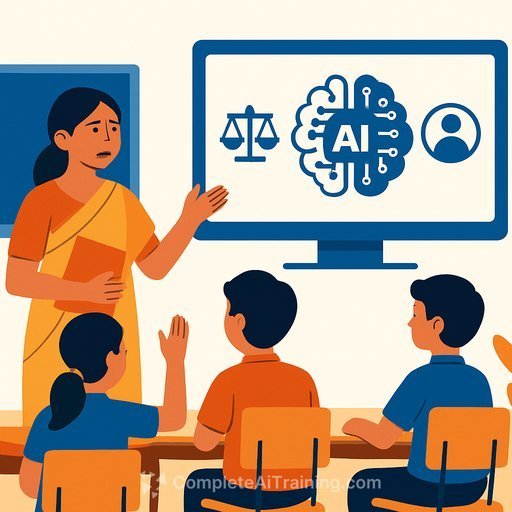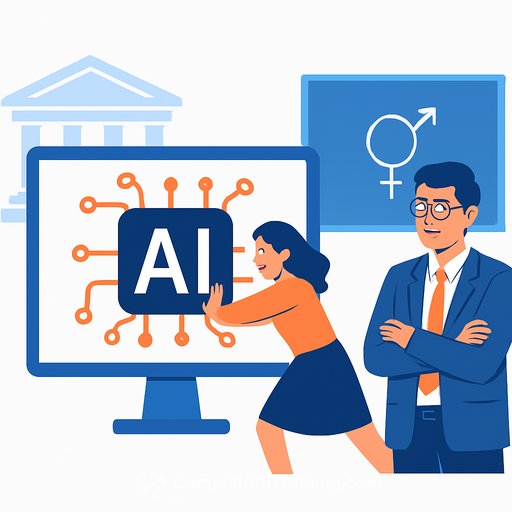AI in schools: a practical guide for educators
AI is already reshaping how teachers work and how students learn. You see it in Duolingo, Quizlet, SeeSaw, and Socratic. These apps use algorithms to personalise pathways and keep learners engaged. For teachers, AI-literacy is now a core professional skill.
Where AI already lives in classrooms
Algorithms in learning apps adapt content and trigger branching based on student responses. This gives each learner a path that reflects their needs and pace. Used well, it reduces busywork and helps you focus on high-impact teaching.
AI-literacy: what teachers need to know
With human-centred practice as the anchor, AI-literacy is foundational for teachers. It covers how AI models are trained, the role of data and algorithms, ethics, benefits and risks in education, and practical use for planning, instruction, and assessment.
- Know what AI is and how it works in plain terms.
- Use ethical principles to critique AI and AI-human interaction.
- Apply AI to plan lessons, teach, and assess with clear intent.
- Pursue ongoing professional development to build these skills.
See global guidance from UNESCO for policy and classroom practice: UNESCO: Generative AI in education and research.
Ethical guardrails in Australia
Ethical use means applying Australia's AI ethical principles and the national guardrails for schooling. The centrepiece is human-centred deployment that protects student wellbeing and learning. Review the national guidance here: Australian Framework for Generative AI in Schools.
Privacy and data security
Student privacy and data security should be top priorities. School staff need clear processes to detect and respond to breaches and to evaluate tools against the guardrails. Put simple systems in place and test them often.
- Run a privacy impact check before adopting any AI tool.
- Use school-managed accounts and data minimisation by default.
- Set clear rules for data retention, export, and deletion.
- Train staff and students on safe prompts and red lines (no sensitive data).
AI-Pedagogy: turning literacy into practice
AI-Pedagogy links ethics with classroom moves that improve learning. It helps you pick the right tools and design tasks that build critical and creative thinking, both individually and in groups.
- Choose tools that are easy to use, age-appropriate, and curriculum-aligned.
- Spark curiosity with relevant, real tasks.
- Support analytical, critical, and creative thinking.
- Tailor learning for individuals and groups.
- Model ethical, original creation with AI.
Examples include Extended Reality for concept visualisation, intelligent tutoring for practice, and formative assessment apps for feedback.
Prompting as teaching
Model how to ask better questions of AI, then critique the responses. Show students how to check sources, question claims, and compare with reputable references. Treat AI output as a draft, not a destination.
- Prompt pattern: task + context + constraints + style + criteria for quality.
- Follow-up: ask for sources, counter-arguments, and alternative methods.
- Adapt: use assessment criteria to refine and create new drafts.
Assessment with AI
Assessment guides your next teaching step and supports differentiation. Immersive Assessment asks students to use AI to complete authentic tasks-and be assessed with clear criteria that include ethics and original thinking.
- Choose tools that give timely, useful feedback.
- Look for features that ask students questions, not just give answers.
- Enable peer feedback and questioning.
- Connect to individual learning goals and student agency.
Example: Students use an AI tool to plan a science investigation, justify their prompts, verify sources, and submit a reflection on where AI helped or hindered their thinking.
Data literacy: turning insights into action
AI-literate teachers are data-literate teachers. They decide what data matters, how to collect it, and how to analyse it in context. This informs what to teach next and when to intervene.
Build Individual Digital Learning Histories by compiling class results over time. Add NAPLAN, classroom assessments, and intervention outcomes. Share progress with students through LMS dashboards so they can set and track goals with you.
A simple workflow
- Define: the learning goals and the evidence you need.
- Collect: low-friction data from class tasks and AI-enabled tools.
- Analyse: look for growth, gaps, and misconceptions.
- Act: adjust instruction, groupings, and supports.
- Reflect: review impact, then repeat with small improvements.
Can AI improve learning?
Yes-when teachers are AI-literate, human-first, and clear on purpose. Pair ethical practice with smart data use, longitudinal monitoring, and student agency. Keep professional learning active and grounded in classroom reality.
Start small this term
- Audit current tools against curriculum, privacy, and age-appropriateness.
- Pick one use case: feedback on writing, quiz generation, or concept explanations.
- Design one Immersive Assessment with transparent criteria.
- Set up a simple progress dashboard in your LMS.
- Plan staff training focused on prompts, verification, and ethics.
If you want structured upskilling, explore role-based AI courses here: Complete AI Training: Courses by Job. For practical prompt skills, see this collection: Prompt Engineering resources.
Your membership also unlocks:






